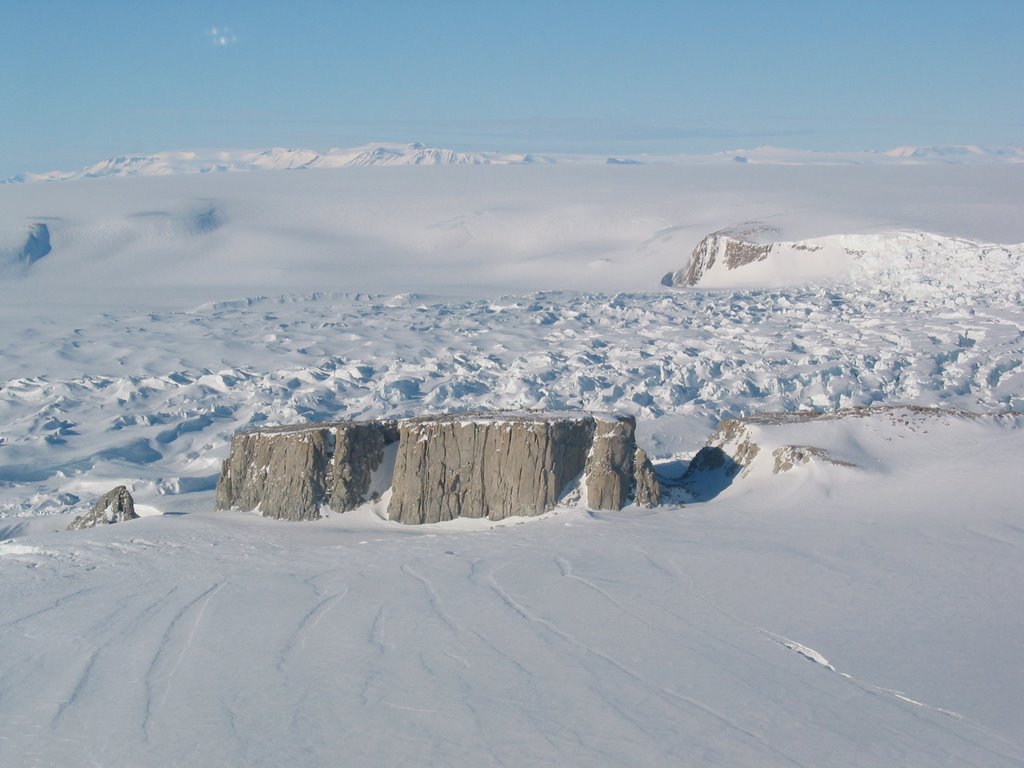Nunatak
A nunatak (from the Inuit word nunataq) is an exposed, often rocky element of a ridge, mountain, or peak not covered with ice or snow within (or at the edge of) an ice field or glacier. They are also called glacial islands. Examples are natural pyramidal peaks.
The word is of Greenlandic origin and has been used in English since the 1870s.
Description
The term is typically used in areas where a permanent ice sheet is present and the nunataks protrude above the sheet. Nunataks present readily identifiable landmark reference points in glaciers or ice caps and are often named. While some nunataks are isolated, sometimes they form dense clusters, such as Queen Louise Land in Greenland.
Nunataks are generally angular and jagged, which hampers the formation of glacial ice on their tops, although snow can accumulate on them. They usually contrast strongly with the softer contours of the glacially eroded land after a glacier retreats.
Typically nunataks are the only places where plant life can survive on the ice sheets or ice caps. Lifeforms on nunataks are frequently isolated by the surrounding ice or glacier, providing unique habitats.
